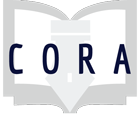Assignment
Local Communities Matter: Analyzing Historical Urban Sources
With a wealth of sources, archives offer numerous educational opportunities for students to enhance critical analysis, historical inquiry, and information literacy skills. This workshop demonstrates Research as Inquiry, as it guides students through the steps of initial inquiry with primary sources in archives: basic description, context investigation, and disciplinary questions. The Analyzing Archival Sources Worksheet is adaptable for instruction on physical and digital archives pertaining to local communities and urban development. Additional research assignments are suggested to create a scaffolding learning experience on archival research.
• Students gain introduction to research in archives and special collections.
• Students learn about archival collections and how to locate contextual information using collection guides.
• Students engage in hands-on active learning and group discussion with different types of archival materials pertinent to local communities and urban development.
• Students analyze historical documents and evaluate the context of these primary sources.
Information Literacy concepts:
Individual or Group:
Ability Level:
In collaboration with Professor Mona Seymour, this library workshop is conducted during an Archives and Special Collections instruction session for Urban Studies 1010: Urban Analysis at Loyola Marymount University. During the workshop, students investigate archival materials pertaining to community and urban development in Los Angeles after the 1992 civil unrest. In groups of two, students investigate a variety of archival materials, such as telephone surveys, urban study reports, and radio program transcripts, documenting economic and social aspects of diverse local communities. Using the archival collection guides, each student group focuses on one primary source document in order to fill out the Analyzing Archival Sources Worksheet. Guided by the Worksheet, students learn to identify key elements of archival sources, explore historical events and contexts in which these primary sources have been created, and consider further inquiry and research.
After students complete the worksheet, the instructor(s) facilitate group discussion with the class. Each student group shares their observation and analysis of a primary source. Students are asked to compare and contrast the different types of historical urban sources. In conclusion, the class would discuss how to incorporate the historical urban sources into their disciplinary research.
The Analyzing Archival Sources Worksheet can be used for archives and special collections instruction using physical archival materials, and it can also be adapted for reference library instruction using digital archival objects.
Beyond the instruction session, the following research assignments could create a scaffolding learning experience on archival research.
For example:
Students can visit physical or digital archives, locate a historical document of their interests, and fill out the worksheet as their first step of research.
• Short writing assignment: Based on the Worksheet, each student writes an analysis report on their selected primary source materials from archives. Students may choose two or more primary sources in order to evaluate the diverse aspects and perspectives highlighted in each document. They must properly cite their primary sources, indicating the specific collections and archives.
• In-depth research assignment: Based on their initial analysis of a primary source, students come up with their own research topics. Consider the following: How have the urban situations changed between the time of the document’s creation and the present time? Has there been any progress in addressing and implementing change in local communities? Students need to incorporate other primary sources and secondary sources for their research papers.

